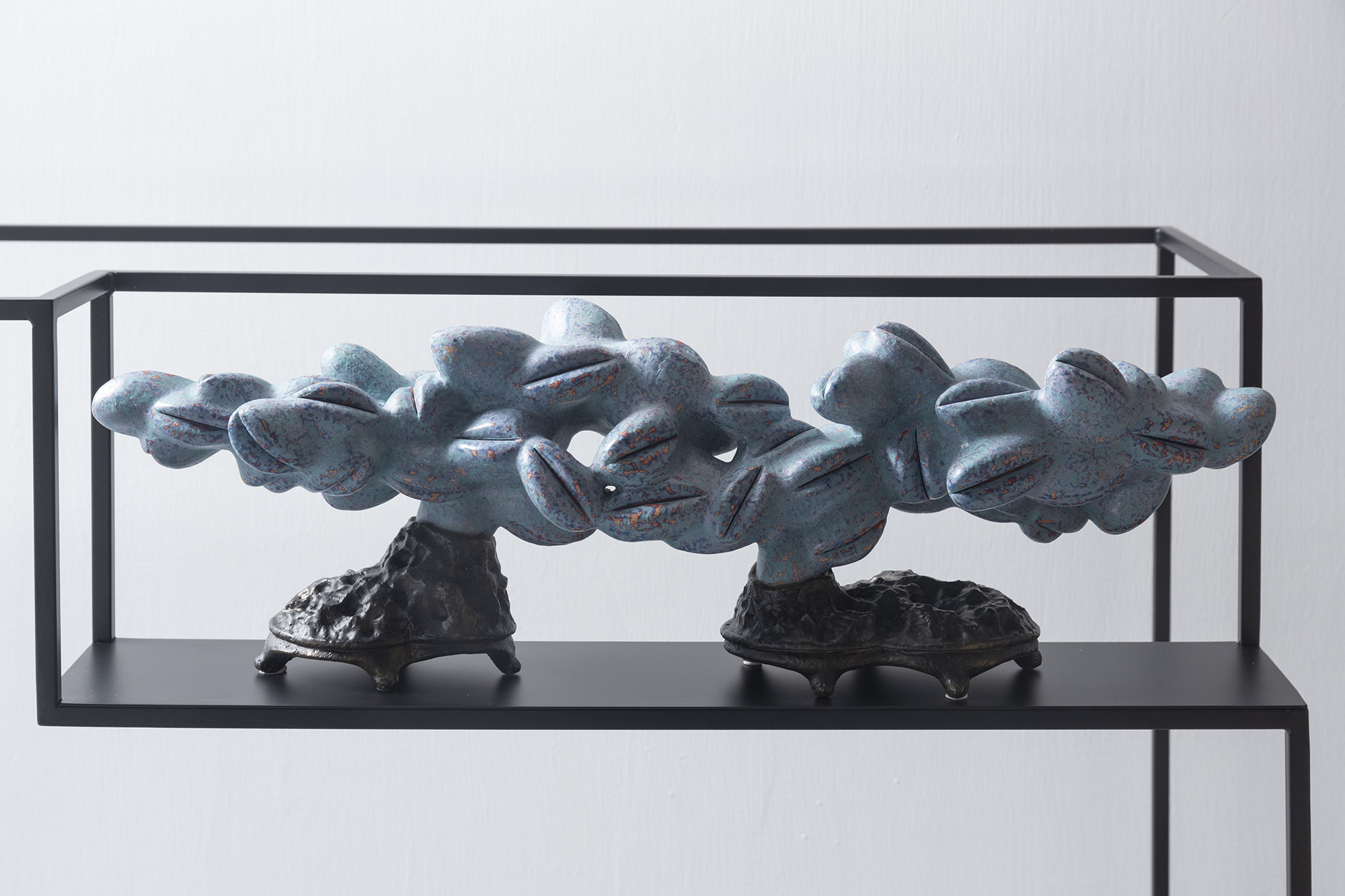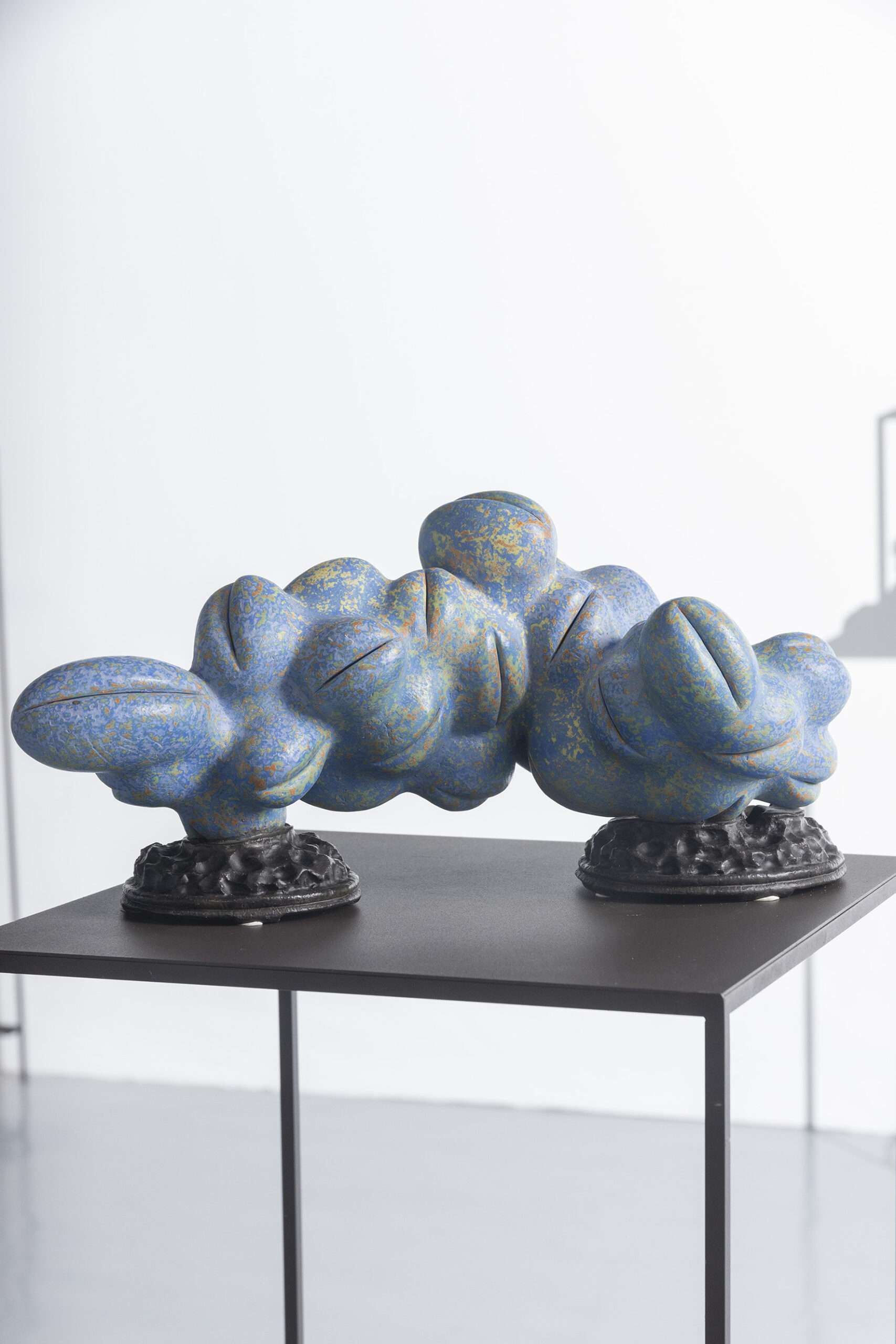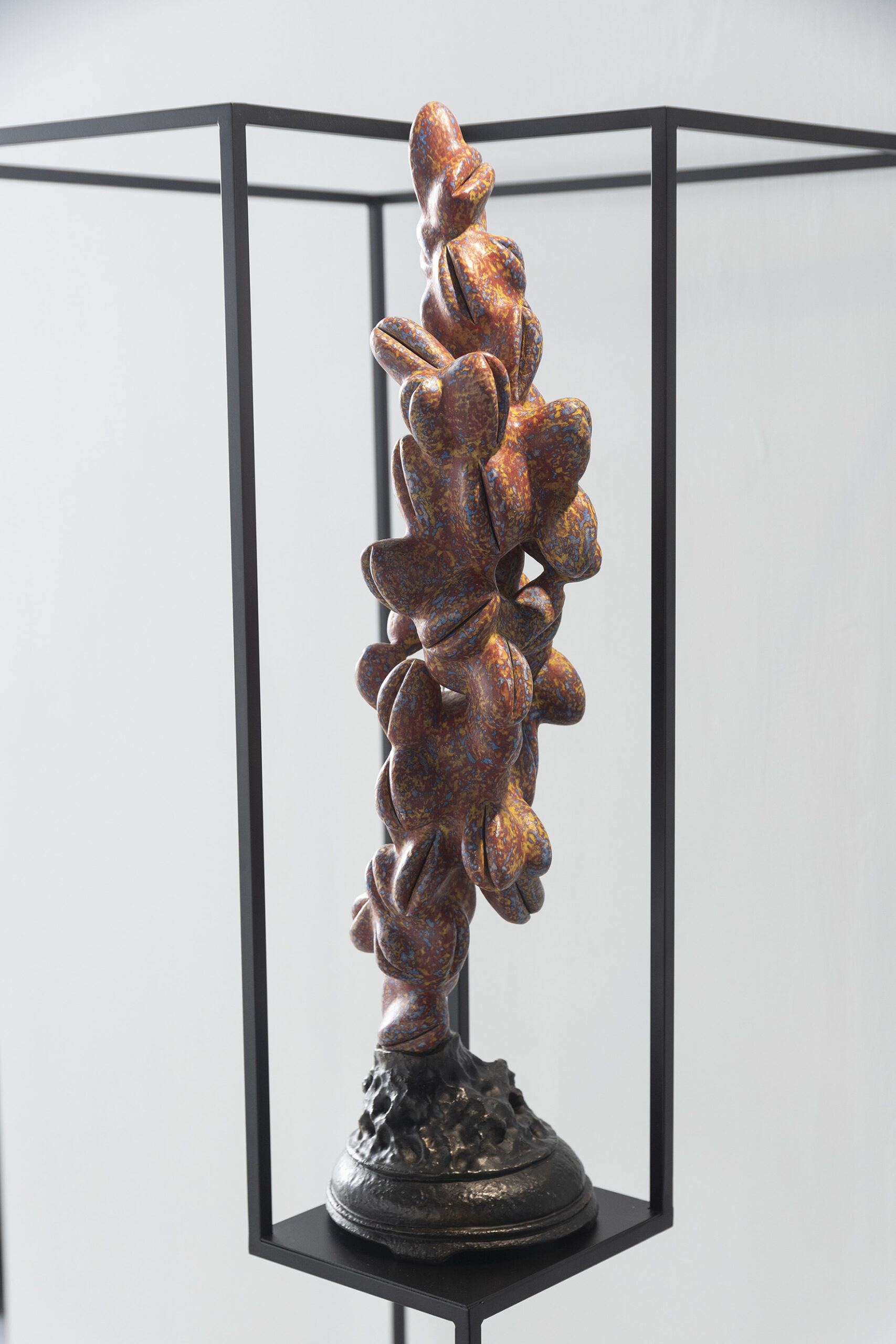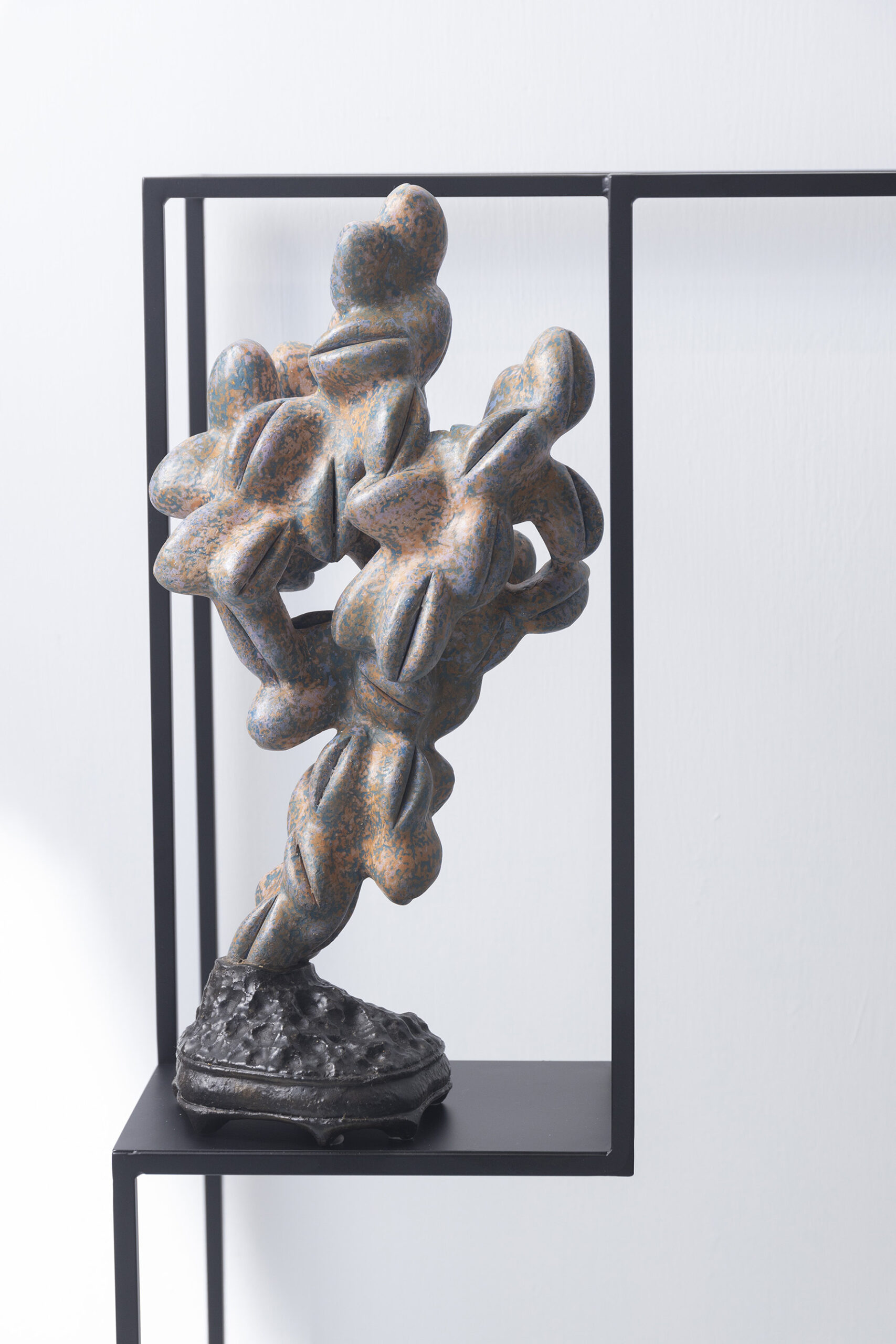Depiction:
In terms of stylistic symbols, the "Rock with no name" series draws upon the highly representative traditional scholar's aesthetics of unusual stones as emblems. The series interprets the artist’s approach and philosophical reflections into ceramics through the form and aesthetics of unusual stone collections. The collection of unusual stones serves as a miniature reflection of the scholar’s worldview and aesthetics, continuing the natural perspectives of traditional ink-wash landscape paintings and transforming them into elegant objects for refined scholars.
In terms of form and technique, the works in this series adhere to a no-glaze approach, applying layers of color with colored clay and then using techniques borrowed from lacquerware, such as "blotched lacquer" or "rhinoceros leather", which reveal color through a method of subtractive sanding. The colored layers continuously and randomly interact with the artist's aesthetics, creating a harmonious and balanced state between color and the artist’s conceptual intentions.
The symbols of unusual stones are a hallmark of CHANG Ching-Yuan’s work, and the appropriation of these symbols in the unusual stone culture represents CHANG Ching-Yuan’s inquiry into various aspects of ceramic creation. This includes exploring the potential of ceramic clay, glazes, forms, the internal characteristics and locality of the work, and its external connection to societal identity. The "Rock with no name" series presents a strong visual form and precisely associates with the dialectical content of identity.
"Rock with no name – Evil Little Rocks" is a hundred-stone diagram from CHANG Ching-Yuan’s "Rock with no name" series, using a multitude of small unusual stones to evoke the concept of a hundred-stone diagram. In traditional ink-wash painting, there are themes like "Hundred Sons" and "Hundred Horses," where "hundred" signifies abundance or infinity in society, implying a sense of completeness. In the culture of unusual stone collecting, these stones are also known as "mountain stones." They range in size from those suitable to be placed in the garden to smaller ones that can be handled on a desk. In using the name "Evil Little Rocks" to denote rebellion, CHANG emphasizes an avant-garde nature of work that does not follow traditional conventions, showcasing various experiments of form. By referencing the traditional notion of "hundred" as many, he exhibits the concept of endless aesthetic richness in unusual stone forms. "Evil Little Rocks" represents the manifold aspects of CHANG Ching-Yuan’s aesthetics, with each piece possessing its expression: steady and grounded, evenly matched, solitary and lofty, perilously perched, or elegant and graceful.
Despite this dynamic effort, CHANG Ching-Yuan still senses the instability of contemporary cultural aesthetics and identity. Thus, even though the aesthetics of the clear acrylic support create a full space, the unusual stones remain suspended on the transparent base, lacking a firm place to stand.
[Extracted parts from Mr. HSU Yuan-Ta's (Assistant Professor, Department of Art History, Tainan National University of the Arts) text titled "Searching for Myself Among Thousands of Mountains and Waters"]
A set of ten pieces (including an acrylic display stand) : D20 x W90 x H79.5 cm







